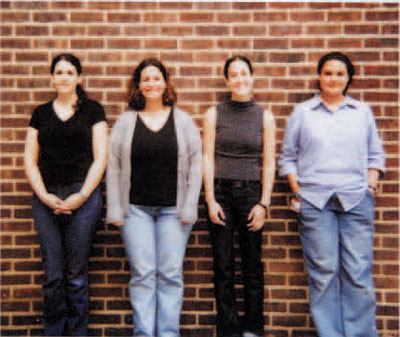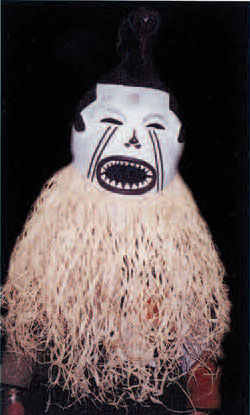
The University of Pennsylvania Museum of Archaeology and Anthropology has been running a nationally known Collections Management Internship Program for the past twenty years. The program exposes the interns to practical aspects of managing archaeological and ethnographic collections through day-to-day activities. This year our four interns—Molly Greenfield, Christina Pappas, Gina Spezialetti, and Sara Summers—will focus primarily on the relocation of ethnographic objects from the sections that are moving into the Mainwaring Wing (see Leslie Guy’s article about the move in this issue).
Molly Greenfield, an intern in the Oceania Section. is a recent graduate of Bryn Mawr College with a degree in Cultural Anthropology. While attending Bryn Mawr, she worked with the College’s ethnographic collections, and during her junior year, spent six months on the island of Java. There she conducted ethnographic fieldwork on Javanese traditional arts and material culture which culminated in her thesis, “Art and Others: The Objectifications of National and Local Identities in Indonesia,” as well as an exhibition which she curated.
Christina Pappas will be working in the Asian Section. She recently graduated from Mercyhurst College in Erie, Pennsylvania, with a B.S. in Anthropology. At Mercyhurst, Christina specialized in textile studies and analysis, and conducted extensive research on Bronze Age textiles, enabling her to replicate the weaving of textiles from Bab edh-Dhra, Jordan. She has spent the last two summers working in the Textile Conservation Department at the Metropolitan Museum of Art in New York under Nobuko Kajitani. Christina is also an experienced field archaeologist and hopes to someday excavate in Asia.
Dina Spezialetti is interning in the African Section. She is a graduate of Washington and Lee University with a degree in Anthropology and Archaeology. Portions of her research—a study of transportation in a historic iron mining complex involving field survey and documentary research—were presented at the undergraduate conference at Santa Clara University in April 2001. She has spent the last year working on the renovation project at the Rockwell Museum of Western Art in Corning, New York, as assistant to the Collections Manager.
Sara Summers is also working in the Asian Section. She recently received her MA in the new Indigenous Nations Studies Program in the Museum Studies track at the University of Kansas. Per area of study is in the reconciliation of the traditional care of Native American objects in museums with standard museum practices.

International Classroom, part of the Education Department, has been awarded a grant of $3,500 from the Pennsylvania Council for the Arts towards the creation of seven life-size masks replicating objects in the collections. The masks, which will be worn at various Museum events and outside parades, are being created by Tom Sonnenberg, a local artist who has a long track record in working with the University Museum and its educational services, as well as other local cultural institutions such as the University of the Arts.
The goal of this project is to create functional mask interpretations of figurative art from a variety of cultures represented in the Museum’s galleries, including Egypt. Mesopotamia, Canaan, Africa, China, Buddhism, Native America, and Mesoamerica. This artistic project furthers the educational mission of the Museum. We guide children, their teachers, and interested adults through time and across continents to explore the infinite variety of human culture and discover the essential oneness of humankind.
The sample mask, shown here, is inspired by an original Pemba mask of the Suku people who live in the Kwango-Kwilu river region of the Democratic Republic of Congo. The Sulu use these masks in initiation ceremonies. They send young boys between the ages of ten and fifteen to initiation camps for a period of seclusion during which they learn the customs and laws of their society. Masks of this type are worn when important charms are displayed to the initiates and when the newly initiated return to their villages.
This mask will help children and adults learn about the Suku people in particular and the rich diversity of the African continent in general. The Museum will ultimately have a full set of these masks to use as teaching tools.
